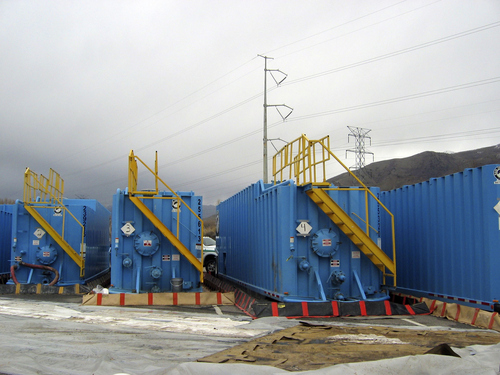This is an archived article that was published on sltrib.com in 2013, and information in the article may be outdated. It is provided only for personal research purposes and may not be reprinted.
When a "For Sale" sign pops up in the yard of the biggest eyesore in the neighborhood, it can be cause for cautious optimism. There is hope that the new owner will clean up the yard, fix the roof, finally paint the thing, not out of kindness to the neighbors, but for his own benefit.
That is the case with the Chevron pipeline, the one that runs 760 miles from Salt Lake City to Spokane, Wash., with a spur that runs to Pocatello, Idaho. The one that last week sprung its third significant leak in the Salt Lake City area in the last three years, this time fouling the fowl-breeding waters at the Bear River Migratory Bird Refuge.
That pipeline, with associated terminals and another spur that carries jet fuel to Salt Lake International Airport, is in the process of being sold, to Tesoro Logistics L.C., for an amount approaching $400 million. If Tesoro is willing to put down that much money for the facilities, there is hope that the corporation sees some value in the system, and that it will do a better job of preventing it from leaking.
After all, the stuff that occasionally pours out of the pipeline and into Utah's waterways — and even occasionally is far too often — is worth something. That, plus the cost of clean-up, repairs and fines, should be enough incentive for those in charge of watching over their stockholders' assets to do a better job of preventing any such spillages in the future.
Of course, as with the run-down house down the street, there is always some risk that even the most serious buyer will shy away from a purchase once more flaws — which mean more costs — become apparent. The fact that Tesoro has delayed closing on the pipeline deal from the end of March to, perhaps, sometime before July can cause observers to wonder if the buyers are having second thoughts.
Whoever owns this pipeline system, formally known as the Northwest Products System, should be under much closer scrutiny from federal and state regulatory agencies. Such agencies have been warning Chevron for years that certain points along the line are not up to standard.
Two leaks into Salt Lake City's Red Butte Creek in 2010 followed a much smaller spill in Idaho, an incident that federal officials say has not really been cured after more than two years of corporate review.
The fuels carried by this pipeline are too valuable to the existing economy for it to be abandoned, or left to rot. But if it takes a more aggressive regulatory culture, with much stiffer fines, to push owners into preventing leaks rather than just cleaning them up, then that's what should happen.
No matter who owns the pipeline.



